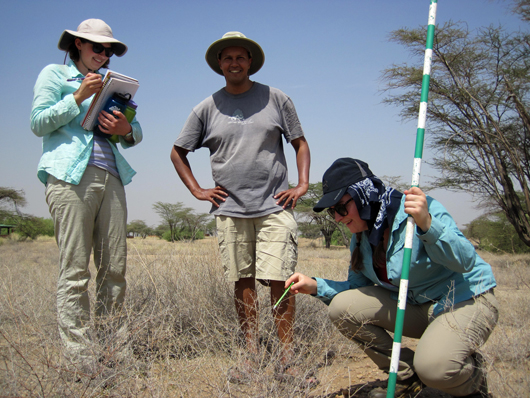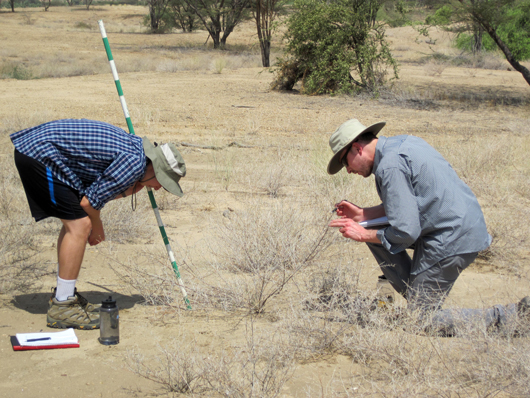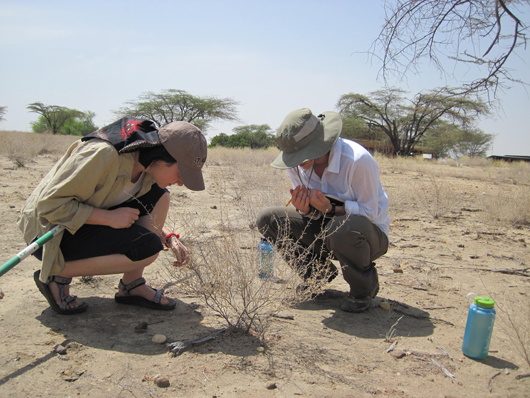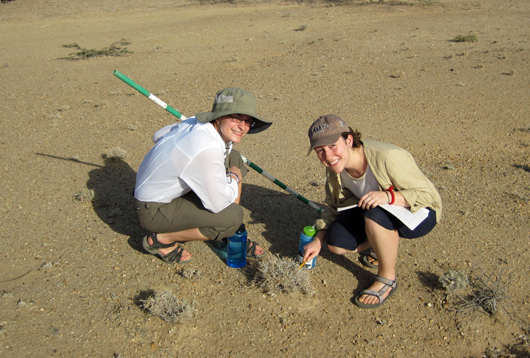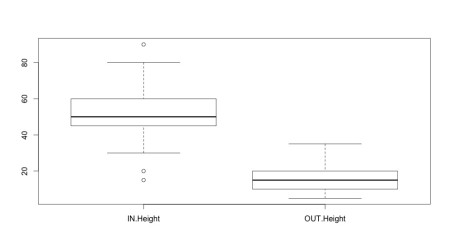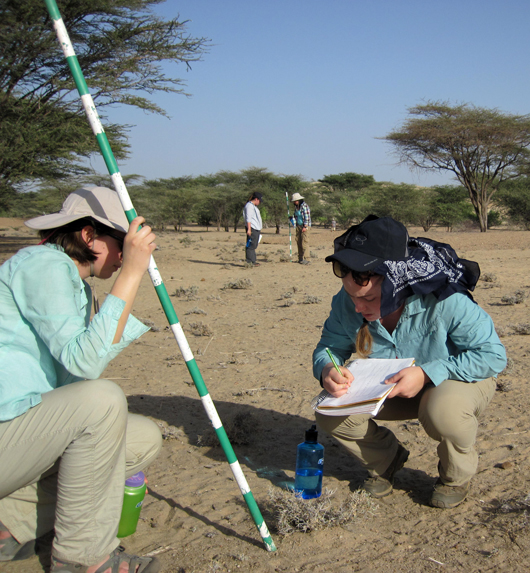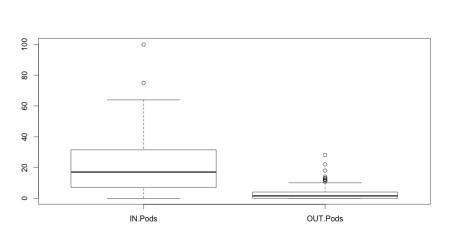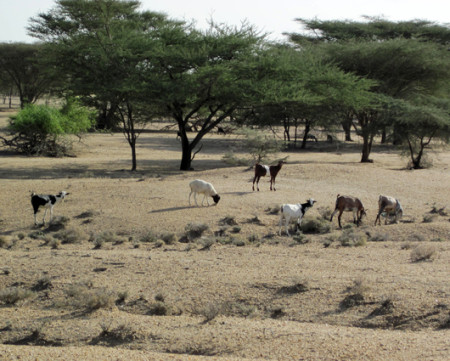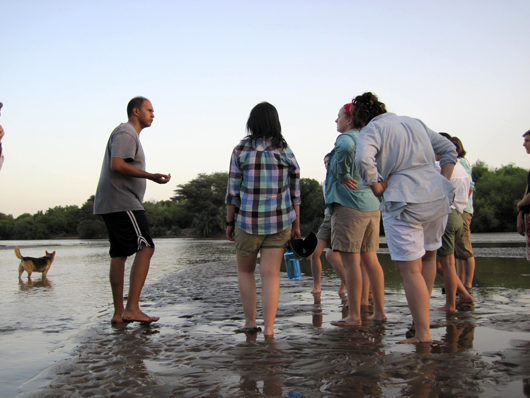The Spring 2015 Origins Field School students are now settled in at the Turkana Basin Institute and have been busy with the Ecology Module for the past few days. One of our first lessons has been looking at the vegetation. In this arid region, plants are essential for animals, including livestock, which is what supports the livelihood of pastoralists. As livestock graze on plants, they shape the vegetation community and plants respond in different ways. One of the most important species for goats, sheep and camels in this region is the short, spiny plant called Indigofera spinosa.
As TBI was built, an exclosure was created to keep goats out, and this serves as a controlled experiment to look at the effect of grazing by goats and other animals on the vegetation. These kinds of ecological experiments generate useful long-term data for scientists and help us understand better the kinds of restoration ecology that may need to be undertaken as well as the carrying capacity of the land and how it might be changing.
As you can see from the data gathered by the students, there is a significant difference in the height of plants – this suggests how important these wild plants are for supporting livestock.
Students also counted the pods on the plants in the two different areas.
As with the height of plants – we found there were differences in pod production. This is important information, as the Indigofera is often leafless, but does hold on to its pods – which are extremely rich in nutrients and proteins. So basically the pods of these plants are among the most important component for livestock in these drylands.
The students learned about the importance of wild plants as forage for livestock and how having lots of replicates in ecology is essential for measuring the differences in a phenomenon as there is a lot of variation that needs to be taken into account when collecting data in nature. As we worked, herds of goats and sheep were feeding on the Indigofera plants nearby:

